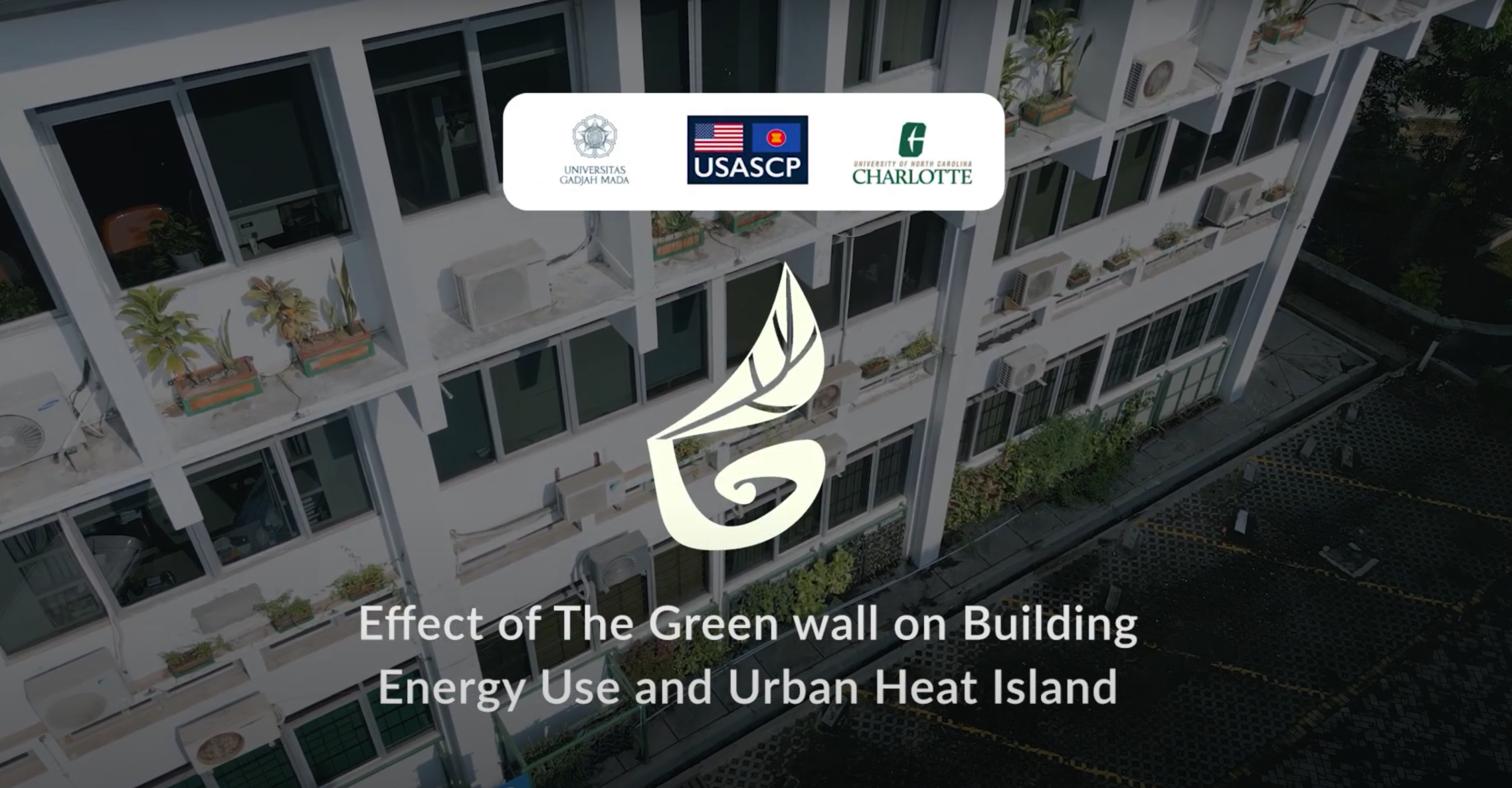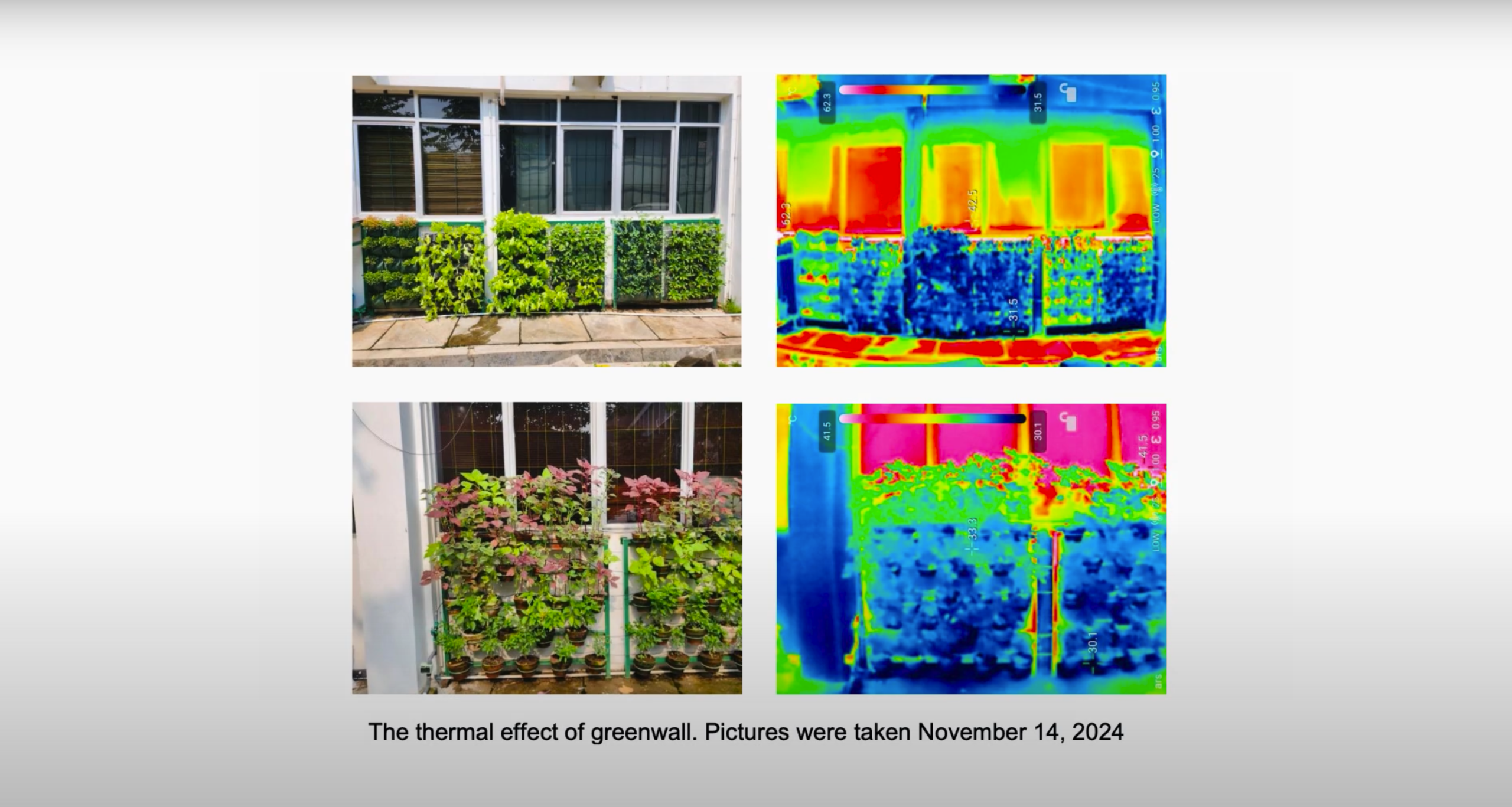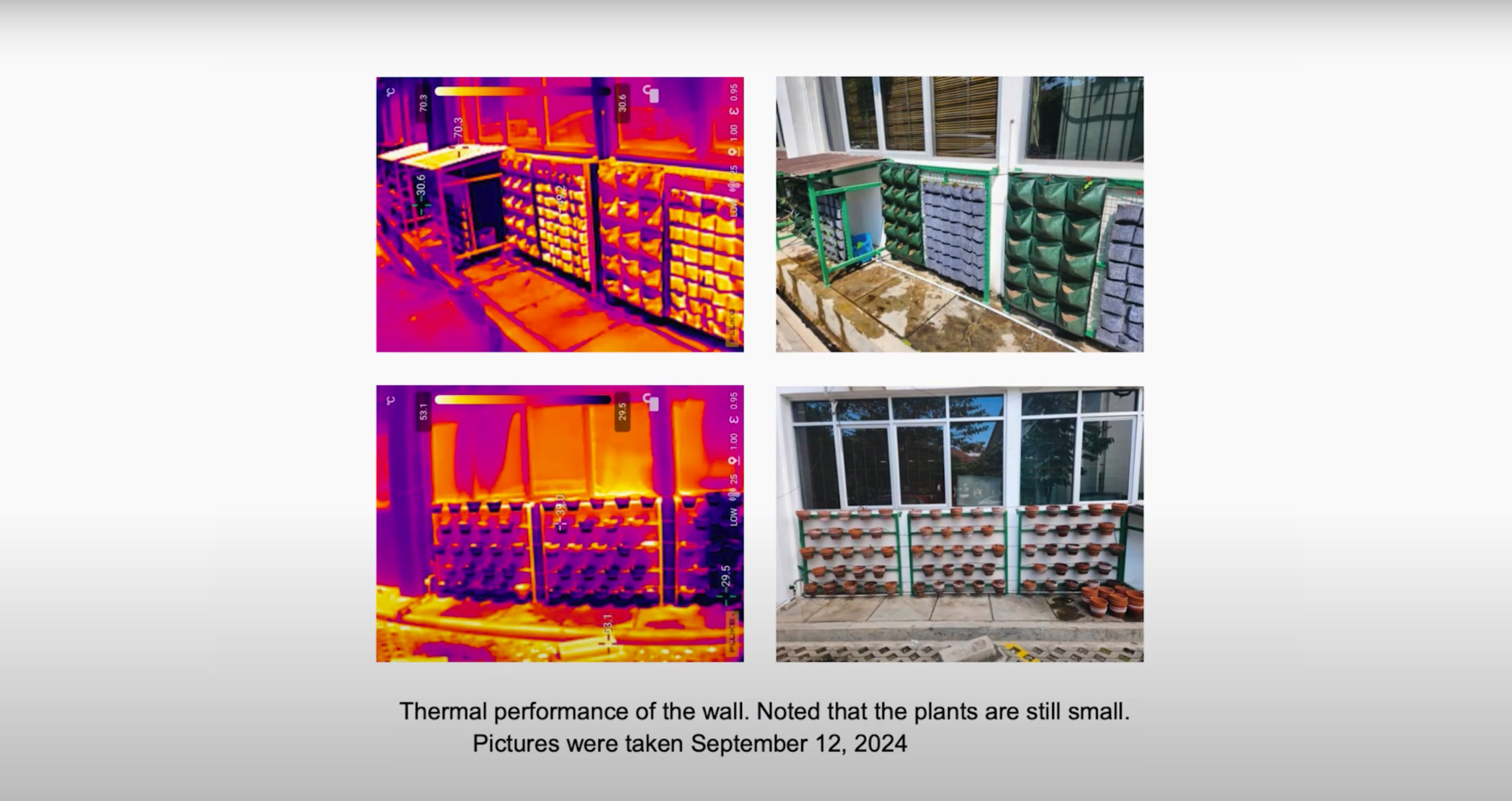In response to the challenges of climate change and energy efficiency in tropical urban environments, the Department of Architecture and Planning, Faculty of Engineering, Universitas Gadjah Mada (UGM) has conducted an experimental study focused on the implementation of a green wall system on a campus building. The research, titled “Effect of Greenwalls on Building Energy Use and Urban Heat Island: Insights from a Campus-Based Case Study on Facade Systems, Plant Performance, User Perceptions, and Social-Educational Impact,” provides an in-depth evaluation of the vertical garden installed on the east-facing facade of the Department’s three-story building, examining its technical, environmental, and socio-educational impacts.
Abstract
“This research investigates the implementation and performance of a green wall system installed on the east facade of a three-story campus building at the Department of Architecture and Planning, Faculty of Engineering, Universitas Gadjah Mada, Indonesia. The study aims to explore the green wall’s contribution to reducing building energy use and mitigating urban heat island (UHI) effects. The research focuses on how construction types, plant selection, maintenance methods, and user interactions influence the performance and broader impact of vertical greenery.
The green wall spans from the first to the third floor and includes three types of installation systems on the first floor: HDPE pockets and geotextile pockets mounted on steel wire mesh and shielded with calcium silicate boards, as well as a third system using clay pots. The plant palette includes vegetables (celery, bok choy, chili pepper), herbs (aromatic ginger, curcuma), and ornamental plants (Sansevieria, Vernonia elliptica), distributed based on sun exposure and plant behavior (climbing, hanging, or upright).
Through observation, photographic documentation, and maintenance log analysis, the study evaluates system durability, plant health, water management, and user perception. HDPE and geotextile systems demonstrated better water retention than clay pots, reducing irrigation frequency and improving plant stability. Nevertheless, users preferred the clay pot system due to its natural aesthetic and the use of local materials. Ornamental plants had the highest survival rate, followed by herbs, while vegetables were more vulnerable—green and red spinach were prone to pest attacks, and tomatoes were sensitive to inconsistent watering, often rotting or drying out.
Watering was initially automated via an online timer, but limited control led to overwatering on the upper floors and staining on the facade. This was later corrected by switching to a manual system using 3mm direct tubing, replacing the drip system that had caused algae buildup.
Beyond technical performance, the green wall encouraged user engagement and social interaction. Campus staff harvested and cooked vegetables, integrating the system into daily routines. The installation also served as a living laboratory for students studying sustainable design, carbon sequestration, and passive cooling strategies. As a campus-based case study, this research offers multi-layered insights into the environmental, social, and educational impacts of vertical greenery in institutional settings—laying a valuable foundation for future energy and climate-related assessments.”
The green wall spans three floors and employs three different installation systems on the ground floor: HDPE and geotextile pockets attached to wire mesh and shielded by calcium silicate boards, and clay pots. The selected plants include vegetables (celery, bok choy, chili), medicinal herbs (aromatic ginger, curcuma), and ornamentals (Sansevieria, Vernonia elliptica). Plant distribution was based on sun exposure and growth characteristics (climbing, trailing, or upright).
Observations showed that the HDPE and geotextile systems retained moisture more effectively, allowing for less frequent irrigation. However, users preferred the clay pot system due to its natural aesthetics and use of local materials.
Ornamental plants exhibited the highest resilience, followed by medicinal herbs. Vegetables such as red and green spinach were more vulnerable to pests, and tomatoes proved to be highly sensitive to irregular watering, often rotting or drying out. Initially, irrigation was controlled through an online automatic timer, but the lack of precision led to overwatering on the upper levels and water stains on the facade. This was resolved by switching to a manual system with 3mm direct tubing, which also eliminated the algae buildup caused by the previous drip system.
More than just an aesthetic or passive cooling element, the green wall became a tool for social and educational interaction. Faculty and staff harvested vegetables for daily consumption, embedding the green wall into campus life. Students also used the system as a living laboratory to study sustainable architecture, carbon management, and microclimate control.
This research aims to support the development of green wall systems adapted to Indonesia’s context with two primary objectives:
- Investigating the thermal performance of green walls through field measurements.
- Assessing the broader application potential of green walls in improving urban microclimates through modeling and simulation.
As a campus-based case study, this project provides comprehensive insights into the role of green walls in energy savings, urban heat island mitigation, and their contributions to interdisciplinary education and campus community building.
Watch the full video documentation of this project here:



